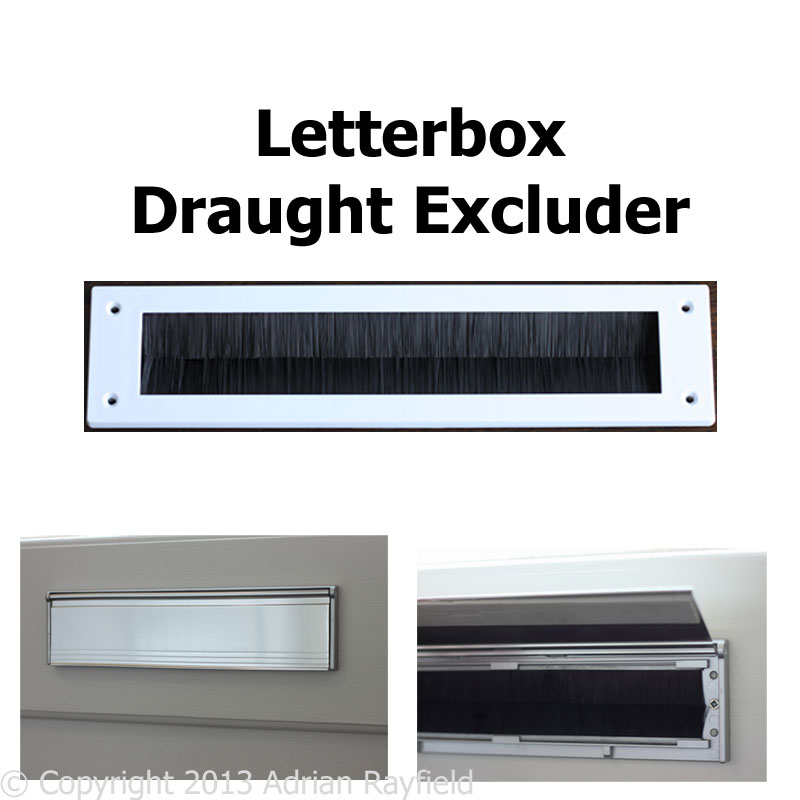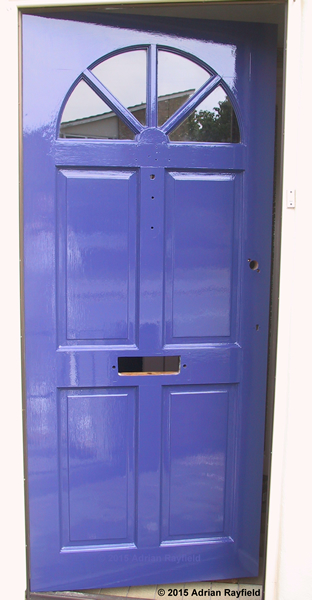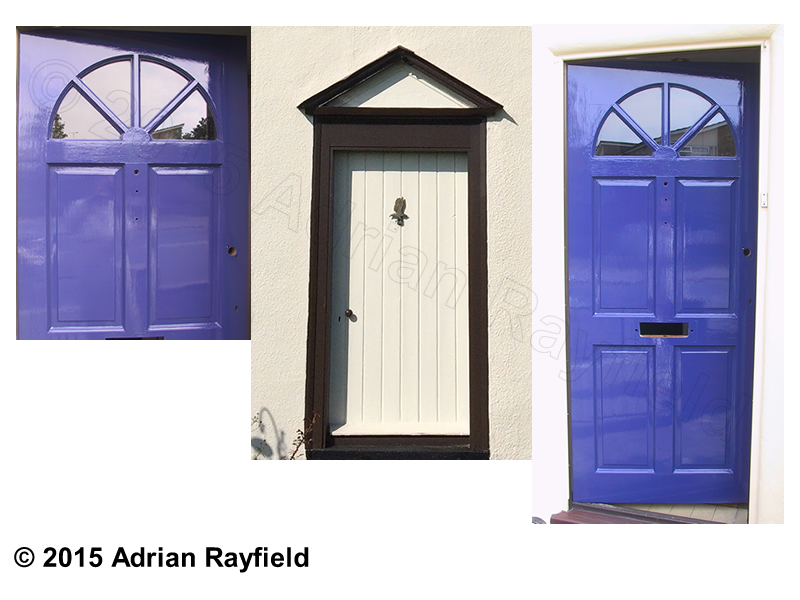Painting, decorating and home improvement tips blog
Fitting a letterbox draught excluder
Posted by Adrian
November 27th, 2018
Fitting a letterbox draught excluder
If you have a letterbox fitted into your front door, you can help reduce heat loss and draughts if you be draught proof it. Modern doors such as PVCu door will come fitted with a letterbox pre-installed and will have a flap on the outside as well as the inside so no further draught proofing is required.
If however you have an older door and only a flap on the outside of the letterbox, for only a few pounds you can add an internal flap or a draught excluder. These are easy to fit and only take a few minutes.
These draught excluders are readily available at DIY and hardware stores. Once you have bought one you simply need a drill, drill bit and screwdriver, an optional extra is a small level to ensure you fit the excluder level. The screws should be in the packet when you buy the excluder.
Types of draught excluder
There are two types of excluder available, a brush type that has brushes that help stop drafts, the same idea as the brush excluder you fit to the bottom of the doors. Two rows of brushes reduce the draught from coming into your property. The other type is a brush with flap, these are slightly more expensive but do look neater.
To fit both types of excluder simply align on the door, using a level to ensure it is straight, then drill pilot holes to take the screws. Then simply screw the two or four screws into the door to compete the job.
Both types of letterbox draught excluder are fitted internally.

Tags: Door, draft, Draught Excluder, excluder, heating, letter box, Letterbox, Money, post box
Posted in Home Improvements | No Comments »
How to paint a front door
Posted by Adrian
May 18th, 2015

How to paint a front door
From time to time you will need to paint your front door, if it is wood that is. Ideally pick a couple of dry days to complete the job such as spring or summer. Pick a good quality exterior paint to ensure a long lasting job.
The front door is one of the most seen parts of your house, a good looking door gives a good impression to visitors, and especially if you are selling your house as it gives kerb appeal.
You should gather all the tools required before starting, you will need:
- Screwdrivers
- Adjustable spanner
- Sandpaper (various grades)
- Primer
- Undercoat
- Topcoat (Satin or gloss)
- Paint stripper (optional)
- Heat gun (optional)
- Scraper (optional)
Ironwork / Door furniture
The first job is to remove all ironwork or door furniture such as locks, knocker, letterbox, escutcheon, door pull and numbers. This will make it far easier for working on the door. Put everything to one side being careful not to lose any screws as some can be tiny and you will need them again later to refit the ironwork / door furniture. You may need an adjustable spanner for the knocker or letterbox.
Preparation
As with all decorating jobs, preparation is key and will take most of your time. Now is the time to decide if you are simply going to re-decorate your door, or give it a real overhaul and strip the existing finish off back to bare wood.
If you are going to remove all the existing paint finish you can do this either by using a heat gun and scraper, or paint remover and scraper. The choice is really up to you. Once the door is stripped give it a good rub down and fill any crack and holes and sand these level and smooth. Once you have done this you are now ready to move to the next section, prime.
If you decide against stripping the door back to bare wood, or it simply doesn’t need it you should give the existing surface a good clean off to remove dirt and grime with a cloth and maybe water, the give the surface a good rub down. Fill any cracks or unwanted holes and rub them down level and smooth. Dust off and you can move onto the next section, prime.
Prime
Once you have prepared the door you should prime the entire door if you have stripped it back to bare wood, or spot prime bare wood if you have just rubbed down and filled. Allow to dry before moving onto undercoating.
Undercoat
Once you have primed the door, whether it be the entire door or spot primed, give the primer a light sand down before applying one or two coats of undercoat. Allow each coat to dry fully if you give it more than one coat sand back between coats for that perfect smooth finish.
Topcoat
Once you have prepared the door correctly and given it it’s necessary coats of primer and undercoat you can now give the door it’s final sand back and the final coat, the topcoat. This maybe a satin finish or a gloss. Again you may want to give two topcoats, but read the manufacturer’s instructions to ensure you leave enough time between coats, and a word of warning, if you sandback, you a fine paper and use light strokes. If you are too harsh you could scratch the surface too much, or even worse roll up the first coat and ruin all your hard work.
Non-painted or varnished doors
This post deals with painted doors, such a glossed doors but for other finishes, such as varnish or stained door the principle is the same, apart from you wouldn’t use primer or undercoat, however the preparation part is still applicable and needs to be done.

Tags: Door, Door Furniture, Filler, Filling, Gloss, Ironwork, Knocker, Letterbox, Lock, Paint, Painting, Preparation, Primer, Satin, Topcoat, Undercoat, Varnish, Woodstain
Posted in Decorating Tips | 1 Comment »
